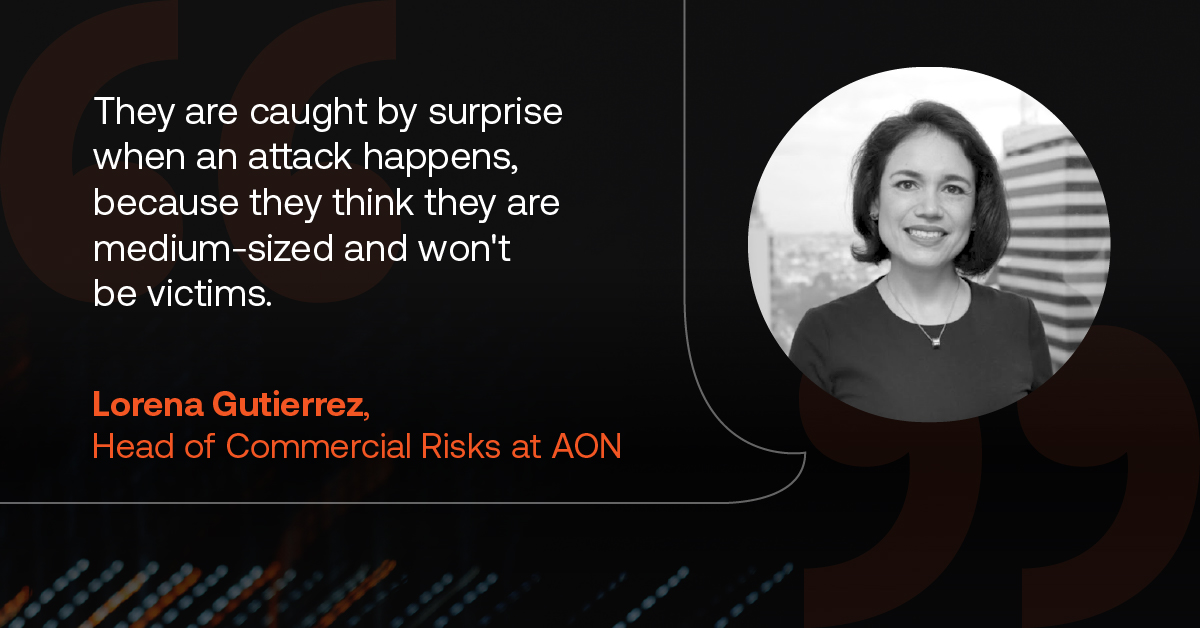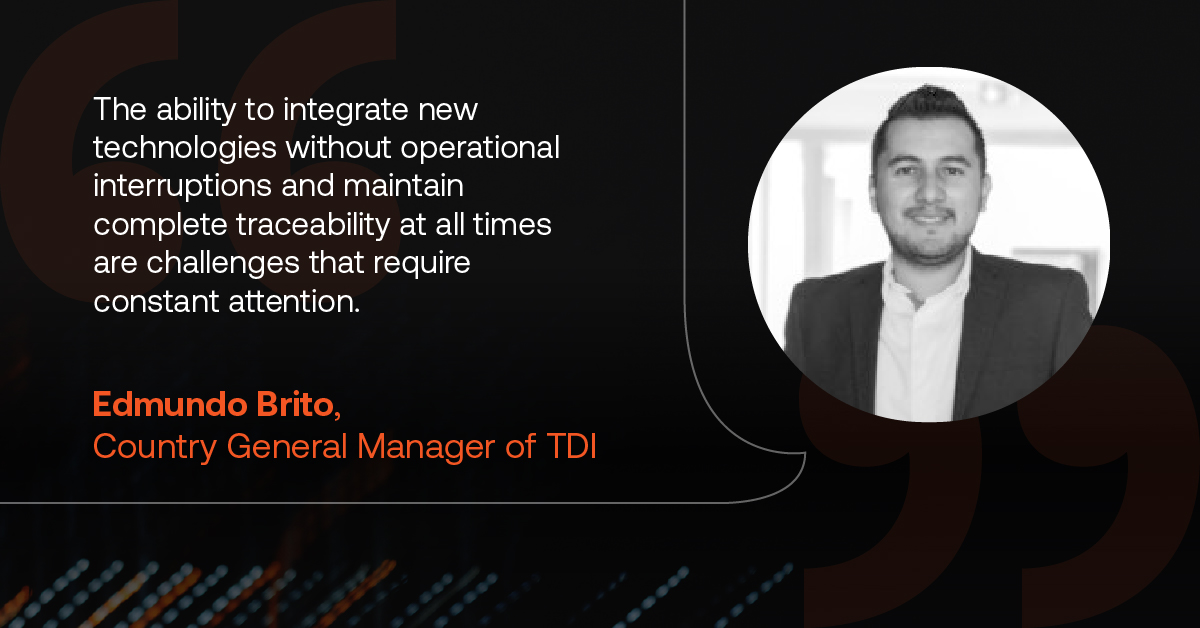In 21st-century companies, the efficiency and security of digital tools are some of the key elements in being competitive. Therefore, having a well-managed information park helps employees have the necessary tools to do their jobs, especially now that remote or hybrid workspaces are increasingly common.
Carrying out good management of the information park is an important step in reducing risks in our work environment, such as system failures, which can directly affect productivity.
But what exactly is an information park, and why is its management so important for CIOs and IT managers? In this article, we will explain how a good technological infrastructure can improve business continuity, reduce risks, and enhance operational efficiency.
Discover how optimized technological infrastructure improves business continuity, reduces risks, and enhances operational efficiency. Request a demo or ask for more information.
Content:
What is an information park?
As Luis Sánchez Acera, senior sales engineer at Flexxible, explains, the term “information park” refers to the set of technological resources that support a company, including both hardware and software. In other words, “it encompasses all the devices and systems that enable employees to efficiently create and develop their work,” he notes.
These resources are divided into two main categories:
- Office resources: servers, desktop computers or laptops, storage, and printers.
- Mobility resources: mobile devices, licenses, software, and cloud tools that allow employees to work from anywhere.
For an information park to be efficient, Sánchez emphasizes that it is key to have good planning that includes periodic updates, resource optimization, and constant monitoring of the infrastructure.

Why is it important to have an updated IT Infrastructure?
Good management and analysis of the IT Infrastructure is the best ally for the security of the equipment. An outdated IT Infrastructure can be the gateway to cyberattacks, affecting its daily functioning.
Cyberattacks are very lucrative businesses. In fact, it is estimated that the global sum of these attacks equals the third-largest economy in the world.
A 2023 report by the Department of National Security, under the Cabinet of the Presidency of the Government, noted that these types of attacks increased by 94% compared to 2022, affecting the privacy of equipment and data. Moreover, Spain is one of the countries that suffers the most from them.
Large companies are usually more concerned about cyberattacks.

Therefore, it is important for the IT Infrastructure to always be updated to avoid failures or other potential security vulnerabilities in our work tools.
According to a 2024 Kyndryl report (a global IT infrastructure services provider), 90% of executives believe their IT infrastructure is top-notch, but only 39% of them think they are prepared to manage future risks.
The report also shows how IT modernization is helping companies gain a competitive advantage. Furthermore, it shows that nearly all modern companies face the challenge of keeping their systems updated.
Additionally, 64% of CEOs are concerned about IT obsolescence, and Kyndryl reports that 44% of critical IT infrastructure is approaching or has reached the end of its useful life.
Security remains the main concern, according to the report. 65% of executives are worried about cyberattacks, but only 30% feel prepared to manage these risks.
What are the differences between an IT Infrastructure, technological park, or scientific park?
The terms IT Infrastructure, technological park, and scientific park are very similar and can cause confusion. Although they are related to technological development, each has its own purpose and function. Here are their differences and objectives:
What is a technological park?
While an IT Infrastructure refers to the set of computers, peripherals, and accessories that make up the digital ecosystem of a company, a technological park is a physical space where technology is developed or commercialized. It can house new startups, software companies, or companies specialized in a specific branch of technology.
In a technological park, professionals have access to support services and content, such as data centers, coworking spaces, and technical support services. An example is the Parque Tecnológico Barcelona Nord located in Nou Barris, designed for innovative, technology-focused SMEs, especially in the field of engineering. In summary, what are technological parks? They are environments designed to promote innovation.
What is a scientific park?
On the other hand, a scientific park focuses on research and development. It has laboratories, research centers, and professionals work in collaboration with universities, companies, and research centers.
A scientific park is more complex, adding laboratory devices, and requires more specialized monitoring mechanisms to control the technical aspects of research. An example would be the scientific park located in the Ciudad de la Ciencia y la Innovación in Valencia, dedicated to advanced research in biotechnology.
What are the objectives of scientific and technological parks?
Scientific and technological parks share the objective of promoting innovation and knowledge transfer between research centers, businesses, and universities. Although their focus may differ, they have many common points.
Both encourage research and collaboration between researchers, startups, and large companies, accelerating the development of innovative products. In addition, they seek to connect the academic and business sectors. In particular, scientific parks aim to turn research advances into concrete realities, promoting technology transfer.
They also attract investment and specialized talent, becoming key ecosystems for technology-based companies and job generators in advanced sectors. Ultimately, scientific and technological parks are engines of transformation that drive innovation and technological development.
What is a technological industrial park?
Industrial parks, also known as industrial belts or zones, are spaces designed to house industrial plants or specific infrastructures. However, a technological industrial park goes beyond that, combining industry and innovation.
These parks integrate advanced technology into production processes and promote collaboration between businesses, research centers, and universities. An example is the Parque Tecnológico de Andalucía in Málaga, where companies specializing in high technology operate. These companies work in a network, driving economic growth and generating employment through very innovative solutions.
How to improve the productivity of our IT Infrastructure?
The productivity of IT Infrastructure can be improved in several ways. Here are four examples shared by Luís Sánchez Acera from Flexxible:
1. Create a plan to extend the useful life of the equipment used by workers
For this, regular diagnostics of the available resources should be conducted, along with cleaning and updates of files and equipment to ensure they last longer.
2. Control the IT Infrastructure costs
License spending must be controlled and aligned with the organization's needs to avoid unnecessary spending, using only what is necessary for the organization and serving the customers.
2. Set a zero downtime goal for equipment
By using automated support systems, we prevent workers from halting their activities because of problems with equipment or files. With knowledge of automated support techniques, problems are avoided and often solved early.
3. Optimize resources
Ensure that the equipment has the necessary functions and resources, such as applications and licenses, required to carry out their tasks and no more. It is important to uninstall unnecessary applications or files because it improves performance, reduces potential operational errors, and enhances the user experience.
To improve productivity, it is key to monitor and detect new problems before they affect users. Automation solutions are a good policy that helps identify and solve problems in time, preventing their impact.
Automation also improves the management of the IT Infrastructure by reducing the operational load and optimizing the workflow of projects. Because of this, IT teams can focus on more complex tasks, such as programming or creating security codes.
Access to advanced tools and the automation of critical processes increase productivity in many areas. However, integrating new technologies without affecting operational continuity remains a challenge for many organizations.

How to configure the IT Infrastructure?
A good configuration of devices is essential to ensure both security and the optimal performance of systems, which, in turn, optimizes the workflow. To achieve this, it is important for the company to have a guide that allows for the establishment of a robust and reliable technological environment.
Below, Federico Zani, technical ambassador of Flexxible, shares some keys to achieving this:
- Have a homogeneous park with few models. This should make management and maintenance easier.
- Efficiently manage software (the fewer applications, the better), to avoid resource dispersion.
- Manage tools that allow visibility at all times and prevent incidents.
- Optimize performance and resources, maximizing the use of each device.
- Security should be a priority to protect systems from threats.
- Technical support, to ensure that any problem is resolved quickly, minimizing downtime.
- Automation and self-remediation, a key approach to reduce operational load and proactively solve problems without manual intervention.
Ultimately, a well-managed IT park improves productivity and security, but also makes the daily work of employees easier, allowing them to focus on what truly matters. Keeping it updated and well-structured is a key investment for business growth and continuity, enabling technology to fulfill its purpose: facilitating and improving the performance of organizations.
Don’t miss the opportunity to improve the efficiency and security of your IT Infrastructure. Request a demo or ask for more information to start optimizing your IT infrastructure today.
Recommended for you
- Automated Scripts: 8 Practical Examples to Optimize IT in Companies
- How to Reboot a Machine Remotely Like a Pro
- Improving Employee Experience: The Key to Increasing Productivity, Engagement, and Development in Your Company?
- 6 Ways to Make Your Digital Employee Experience Strategy Work Harder
- Unlock Employee Potential: Proven Strategies for a Thriving Company Culture in 2025
- Is A Great Digital Workplace Experience The Secret To Business Growth
- What is DEX and Why is it the Solution You Need | Flexxible
- The Hidden Power of DEX: Unlocking Remote Workforce Potential
- Digital Employee Experience: Five Essential Factors for Decision Making


